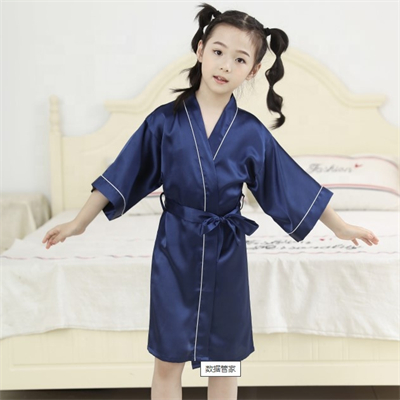Transitioning kids’ sleepwear as they grow up involves choosing age-appropriate and comfortable options that suit their changing needs. Here’s a guide to help you navigate the process:
1. Comfort and Safety:
- Prioritize comfort and safety. As children grow, they may have pferences for different types of fabrics, fits, and styles. Opt for soft, breathable materials that don’t cause irritation.
- Ensure that sleepwear meets safety regulations. Look for flame-resistant (FR) sleepwear, especially for younger children, to reduce the risk of fire-related accidents.
2. Pajama Styles:e
- For babies and toddlers, footed sleepers or sleep sacks are practical and cozy options. They keep them warm throughout the night.
- As kids grow, consider two-piece pajama sets with elastic waistbands. These provide more flexibility and can make trips to the bathroom easier.
3. Transitioning from Footed Pajamas:
- Once children start walking and moving around independently, consider transitioning from footed pajamas to separate pajama sets. This allows for better mobility.
- Choose pajamas with non-slip soles or grippers to prevent slipping on smooth surfaces.
4. Size and Fit:
- Regularly check the sizing of your child’s sleepwear to ensure it still fits comfortably. Kids can outgrow clothing quickly.
- Avoid sleepwear that’s too tight or restrictive, as it can be uncomfortable for sleeping and hinder movement.
5. Seasonal Transitions:
- Adjust sleepwear according to the changing seasons. Choose lightweight, breathable fabrics for summer and warmer options for colder months.
- Layering is key for comfort. Consider adding a light robe or extra blanket during colder nights.
6. Independence and Preferences:
- As kids grow older, involve them in the sleepwear selection process. Let them choose designs or patterns that reflect their personal preferences.
- Encourage them to dress themselves in their sleepwear to foster independence.
7. Transitional Styles:
- Consider sleepwear that’s a mix between traditional pajamas and loungewear. This can include jogger-style pants paired with cozy t-shirts for older kids.
8. Personalized Touches:
- Add personalized elements to their sleepwear, such as monograms, patches, or designs that reflect their hobbies and interests.
9. Open Communication:
- Keep communication open with your child. Ask them about their comfort level and if they have any preferences for sleepwear.
10. Regular Assessments:
- Periodically assess your child’s sleepwear to ensure it’s still appropriate in terms of size, comfort, and safety.
Remember that the transition in sleepwear is a natural part of growing up. Prioritize your child’s comfort and preferences while ensuring that the sleepwear meets safety standards. By being attentive to their changing needs, you can help make bedtime a cozy and enjoyable experience as they continue to grow.
























